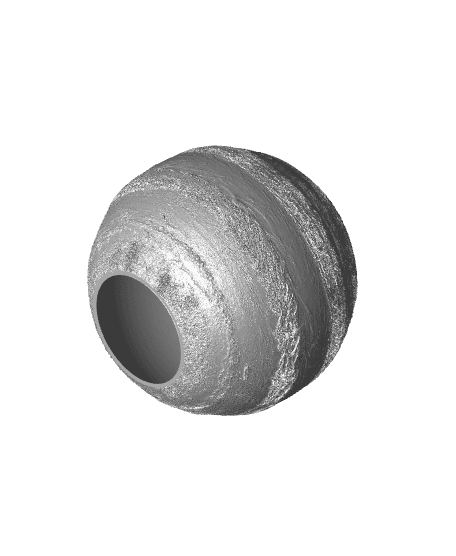Jupiter Night Light
Hey, congrats on finding my Jupiter Night Light, crafted with authentic NASA data!
Here's how to print it, but note you'll need to purchase a lamp socket and a bulb separately.
Jupiter (the shade):
Print it solid with no supports to preserve the lithophane effect. Set the layer height at 0.2mm and the width at 0.4mm. Use concentric infill at 100%, or alternatively, set the wall thickness to about 100mm, which is my preferred method for the same result. I'll upload the Cura Profile I used for printing. You can import it, but please double-check that the layer width and height are correct, as they sometimes import incorrectly.Plate and Cylinder:
These can be printed with any preferred profile and don't require supports.Assembly:
The last image demonstrates the internal setup. The cylinder can be slightly compressed to fit into the plate's hole.Parts for Assembly:
EU Socket: https://ebay.us/PRcPvm
US Socket: https://ebay.us/hBRN1i
Purchasing through these links supports my work!
Bulb:
US:
Enjoy your new lamp!
Additionally, you can scale up the lamp size if desired. The shades featured in this post are compatible with the socket of this lamp. In fact, the Jupiter shade can be mounted onto both the mentioned lamps (more details coming soon).
Common Problems and Solutions:
Issue with Slicing Jupiter: Problem: An error occurs when slicing the Jupiter model. Solution: Scale the model up by a very small amount, such as to 100.1%, and try slicing again. Plate Doesn't Fit: Problem: The plate doesn't fit as intended. Solution: Adjust the scale of the plate in the X and Y directions until it meets your requirements.Why is Jupiter Labeled Incorrect?: The 'Great Red Spot' of Jupiter is typically located in the southern hemisphere. For visibility on the lamp, I've positioned it at the top, leading to an astronomically incorrect depiction.


